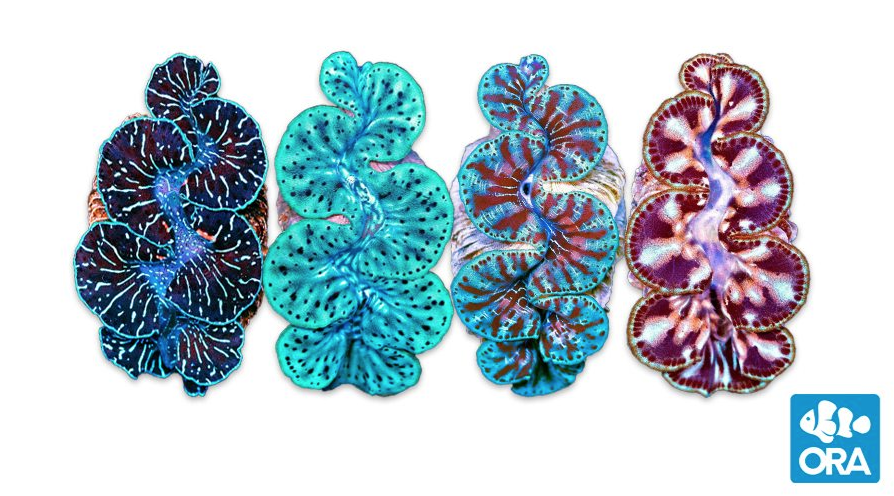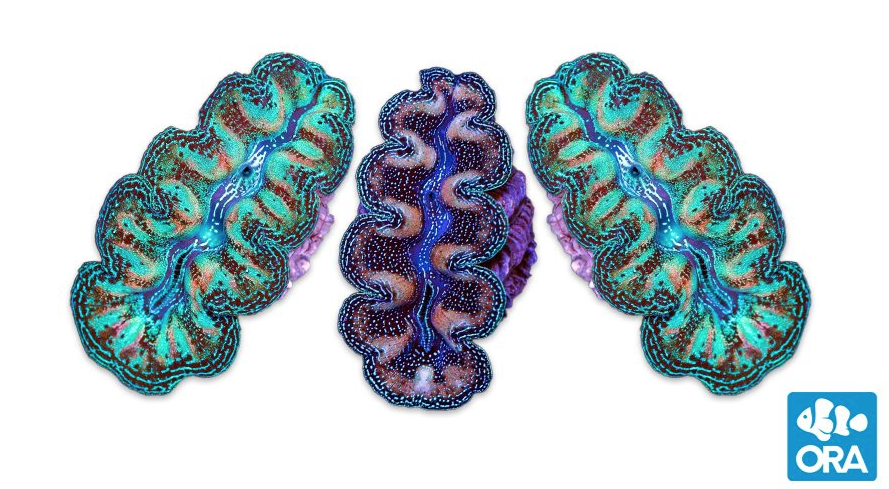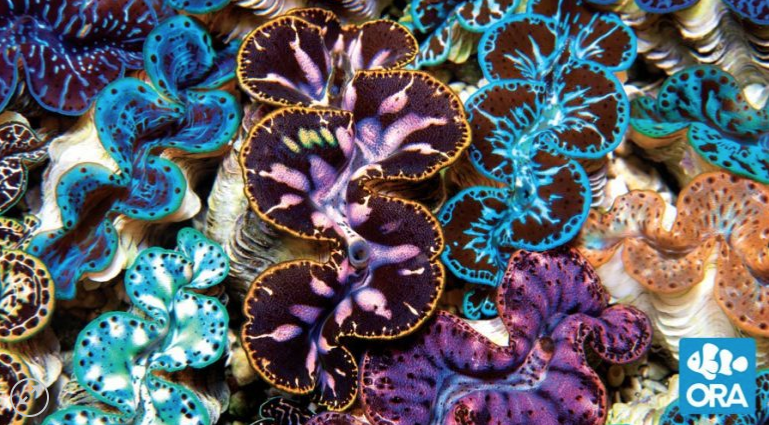Something about giant clams of the genus Tridacna draws us to them. The combination of the tell-tale clam-shaped shell and exquisite mantle color and patterning encapsulates the underwater realm and conjures up far-away Pacific reefs, and another world. With T.gigas, the giant clam, its enormous size is the main draw. With T.derasa, maxima, crocea, and squamosa it’s the mantles we crave, and one or more large clams are the icing on the cake of many jaw-dropping reef tank displays. The good news is that they can be kept successfully in reef aquaria, and can live for a very long time. You just need to choose their tank mates carefully.

Giant clam aquarium care
Coming from shallow waters Tridacna are mostly solar-powered, so they appreciate strong light, and warmer, whiter light brings out their colors best. Blue clams can be lost under blue light but set lighting to a whiter midday ramp, and you will appreciate their true beauty much more. They don’t need strong water flow, and lagoon species such as squamosa and derasa can be placed on the bottom, and on the sand bed, whereas maxima are better high up in the rockwork, and suit SPS tanks well. Feed liberal amounts of phytoplankton and keep an eye on those calcium levels as clams take up huge amounts to build their impressive shells. Avoid fish species that will nip at them, like large angelfish and butterflies.

Conservation status
All Tridacna species are protected under CITES Appendix II, but the good news is that the clams we are offered are farmed sustainably, like ORA’s clams which are spawned and raised at their farm in the Marshall Islands. All ORA clams are available to purchase from SaltwaterAquarium.com. In the gold rush to chase the most colorful corals, or our quest to make our reef tanks as authentic as possible, you cannot beat a clam for visual appeal or that authentic (but sustainable,) piece of a real coral reef.




